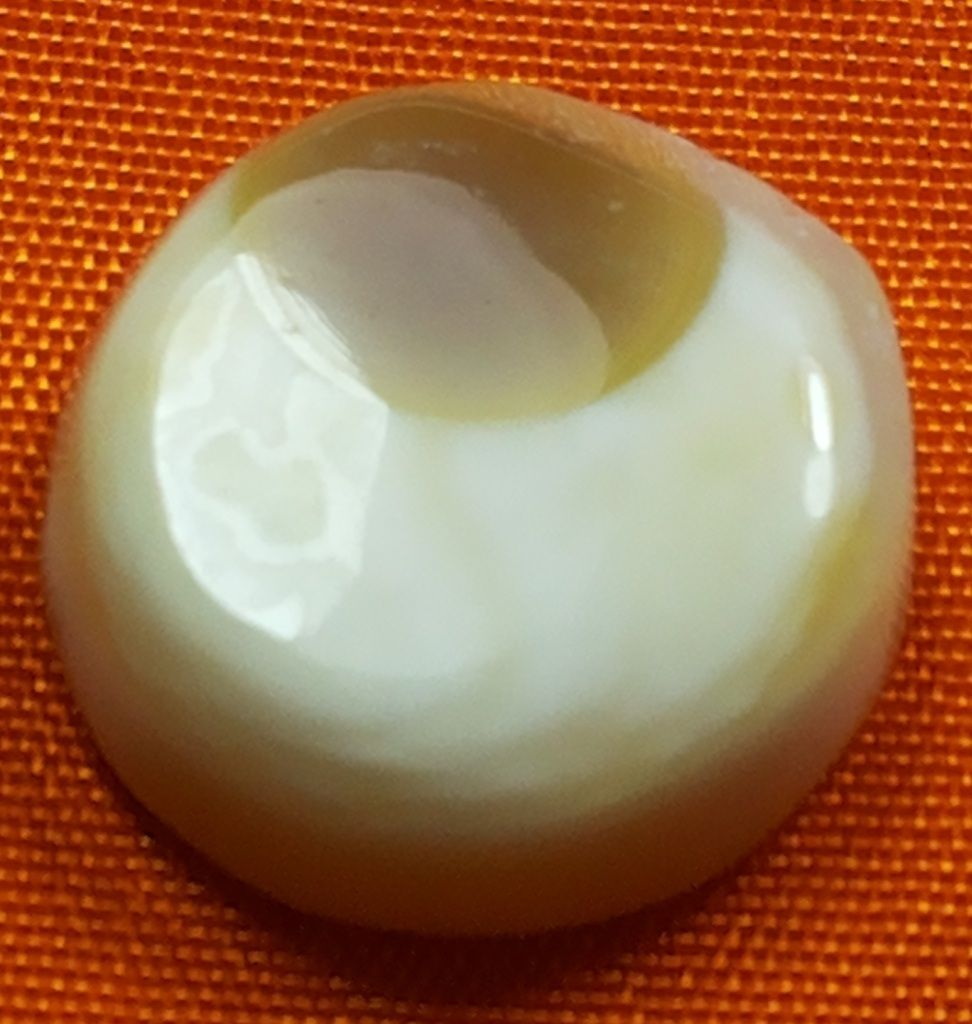|
|
| |
|
| |
|
| |
|
| |
|
| |
|
| |
|
| |
|
| |
|
| |
|
| |
|
| |
|
| |
|
| |


|

Amulet
An amulet is an object whose most important
characteristic is the power ascribed to it to
protect its owner from danger or harm.[1]
Amulets are different from talismans as a
talisman is believed to bring luck or some other
benefit, though it can offer protection as
well.[2] Amulets are often confused with
pendants—charms that hang from necklaces—any
given pendant may indeed be an amulet, but so
may any other charm which purports to protect
its owner from danger.
Potential amulets include gems, especially
engraved gems, statues, coins, drawings,
pendants, rings, plants, animals, and even words
in the form of a magical spell or incantation to
repel evil or bad luck.
History
Amulets were particularly prevalent in ancient
Roman society, being the inheritor of the
ancient Greek tradition, and inextricably linked
to Roman religion and magic. Amulets are usually
outside of the normal sphere of religious
experience though associations between certain
gemstones and gods has been suggested, for
example, Jupiter is represented on milky
chalcedony, Sol on heliotrope, Mars on red
jasper, Ceres on green jasper and Bacchus on
amethyst.Amulets are worn to imbue the wearer
with the associated powers of the gods rather
than for any reasons of piety. The intrinsic
power of the amulet is also evident from others
bearing inscriptions, such as vterfexix (utere
fexix) or "good luck to the user."Amulet boxes
could also be used, such as the example from
part of the Thetford treasure, Norfolk, UK,
where a gold box intended for suspension around
the neck was found to contain sulphur for its
apotropaic qualities.
Vastu Tips
Big things create big ideas, says Maya Matam.
Big buildings give maximum entry to natural
energy of cosmic energies. So it gives the
higher consciousness. Taller the building more
is the consciousnesses. Higher consciousness
creates high ideals, great ideas, and great
knowledge. So the ancient temple, must and
churches have elevated roof. But the is
unsuitable to general public. Common to all
Indian sciences is the concept that the cosmos
is composed of the five great elements namely
ether, air, fire, water and earth. These
elements interact in the microcosm of the human
body and the macrocosm of the universe according
to the energizing flow of the spirit. Just as
the body utilizes these five elements to
maintain life, Vastu Shastra views a building as
a living organism with its own life force that
when properly constructed acts as a receptor for
the benefit and harmonious interaction of these
five elements. The flow of the five elements
through a house carries positive energy,
sustaining life and imbibing the residents with
a deep sense of peace and vitality. In contrast,
a building that traps a chaotic interaction of
elements is said to bring disease and misfortune
to the residents. Vastu Shastra recognizes that
humans are also influenced by planets, spiritual
forces, magnetic and gravitational fields.
It can be well said that the principles of Vastu
dates back to about 1000 of years ago and
constitutes the norms and specifications
guarding the constructional and architectural
pattern of a building. The word “Vastu” has
derived from the word “Vastoshpati”, which has
its origin in the Rig Veda. To construct your
home according to vastu contact us

|

|
|

|
EID KA
CHAND
#
GEM STONE #
|
|
The wait is finally over. After the fast, it is time
for the feast. For one month the faithful followed a
strict regime of fasting and prayers, but with the
sighting of ‘Id-ka-Chand’ Gem, to which they look
forward, has finally arrived. Id ka chand will be
allways yours.While ‘haleem’ was the flavor of the
Ramzan month, it is time for ‘sheer-kurma’ and ‘sewiyan’.
The lon awaited new moon of the holy month of ramzan
would be visible in most parts of india in ebay and
Amazon now. It is only and only for my Muslim
Friends and to those Hindu who believe in moon.
For World Wide Shipping by Post $5
For World Wide EXpress Shipping by DHL $30
Within India Shipping Charges Rs.150

Price Rs.1050, $16
Any Body Can Pay By Bank Transfer to Our Account
Given in the Payment Page.
In India You Can Pay By "Pay U Money" Given Below.
For Country Other Than India Pay By "Pay Pal" Given
Below.

Price Rs.1100, $17
Any Body Can Pay By Bank Transfer to Our Account
Given in the Payment Page.
In India You Can Pay By "Pay U Money" Given Below.
For Country Other Than India Pay By "Pay Pal" Given
Below.

Price Rs.1100, $17
Any Body Can Pay By Bank Transfer to Our Account
Given in the Payment Page.
In India You Can Pay By "Pay U Money" Given Below.
For Country Other Than India Pay By "Pay Pal" Given
Below.

Price Rs.1050, $16
Any Body Can Pay By Bank Transfer to Our Account
Given in the Payment Page.
In India You Can Pay By "Pay U Money" Given Below.
For Country Other Than India Pay By "Pay Pal" Given
Below.

Price Rs.1100, $17
Any Body Can Pay By Bank Transfer to Our Account
Given in the Payment Page.
In India You Can Pay By "Pay U Money" Given Below.
For Country Other Than India Pay By "Pay Pal" Given
Below.

Price Rs.1200, $18
Any Body Can Pay By Bank Transfer to Our Account
Given in the Payment Page.
In India You Can Pay By "Pay U Money" Given Below.
For Country Other Than India Pay By "Pay Pal" Given
Below.
|
|
International
Institute Of Astrology and Occult science (REGD
072)
Bhavisyabani, Nuagaon Square,
Vijoy Vihar, Bhubaneswar 2,
Pin:751002
Ph/Fax:+91 0674 2340474,+91 9437020474(Whatsapp)
E mail:info@occulttreasures.com |
|
|
|


|

VEDA
Vedas are the first text of occultism in our
world. According to Hindu tradition, the Vedas
are Apauruseya "not of human agency", are
supposed to have been directly revealed, and
thus are called śruti ("what is heard"). It is
one of the basic texts which demonstrates the
basic forces of this universe and their use.
Tantras are the advanced form of this Vedic
culture. Four Vedas starting from Rig Veda, Sam
Veda, Yajur Veda and Atharva Veda defines
different forces of this Universe such as Indra
(six sensory organs of our body), Varuna (water
controller), Agni (fire controller), Dig Pals
(direction controller), Soma (nectar controller)
etc. To know which tantric hymn is suitable for
you contact us e mail
Atharva Veda is similar to Tantra, and it
defines Karma Kanda i.e. rituals of fire
sacrifice. Upanishads represent an attempt at
recovering the Jnana or knowledge portions of
the Vedas, the Brahmanas represent an attempt at
reinforcing the ritual aspect of the Vedas, the
Tantra Shastra represents an attempt at
preserving and expanding the esoteric or the
occult part of the Veda.
Tantric Gods like Vedic Gods have two fold
manifestations. One part is physical like water,
fire etc. One is transidental like if mars is
very powerful in a horoscope fire element
becomes maximized within his body. He becomes
the legend of fire or incarnation of fire god.
So, Kumara the son of lord Shiva who has maximum
fire element in his body is considered as fire
god in some hymns of Veda.
Vedas are the first text of occultism in our
world. It is one of the basic texts which
demonstrates the basic forces of this universe
and their use. Tantras are the advanced form of
this Vedic culture. Four Vedas starting from Rig
Veda, Sam Veda, Yajur Veda and Atharva Veda
defines different forces of this Universe such
as Indra (equal to six of our body), Varuna
(water controller), Agni (fire controller), Dig
Pals (direction controller), Soma (nectar
controller) etc.
Vedas are also called śruti ("what is heard")
literature, distinguishing them from other
religious texts, which are called smṛti ("what
is remembered"). The Veda, for orthodox Indian
theologians, are considered revelations seen by
ancient sages after intense meditation, and
texts that have been more carefully preserved
since ancient times. In the Hindu Epic the
Mahabharata, the creation of Vedas is credited
to Brahma. The Vedic hymns themselves assert
that they were skillfully created by Rishis
(sages), after inspired creativity, just as a
carpenter builds a chariot.
There are four Vedas: the Rigveda, the Yajurveda,
the Samaveda and the Atharvaveda. Each Veda has
been subclassified into four major text types –
the Samhitas (mantras and benedictions), the
Aranyakas (text on rituals, ceremonies,
sacrifices and symbolic-sacrifices), the
Brahmanas (commentaries on rituals, ceremonies
and sacrifices), and the Upanishads (texts
discussing meditation, philosophy and spiritual
knowledge). Some scholars add a fifth category –
the Upasanas (worship).
The various Indian philosophies and
denominations have taken differing positions on
the Vedas. Schools of Indian philosophy which
cite the Vedas as their scriptural authority are
classified as "orthodox" (āstika) Other śramaṇa
traditions, such as Lokayata, Carvaka, Ajivika,
Buddhism and Jainism, which did not regard the
Vedas as authorities, are referred to as
"heterodox" or "non-orthodox" (nāstika)
schools.Despite their differences, just like the
texts of the śramaṇa traditions, the layers of
texts in the Vedas discuss similar ideas and
concepts.
.gif)
|
|
|
|
 |
|
|
|








